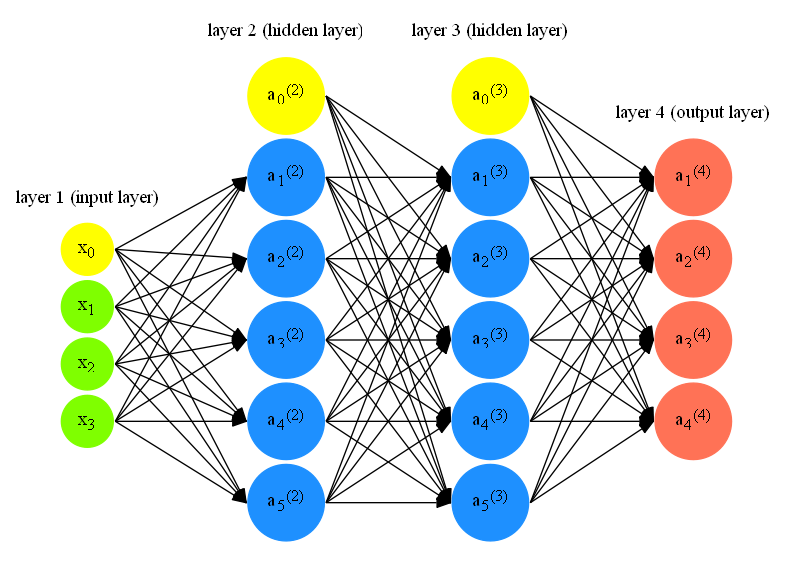
BLOG · 16/10/2024
Neural Networks
A brief introduction to neural networks in machine learning, their types and their application.

NUERAL NETWORKS
A neural network is a computational model inspired by the human brain’s neural architecture, designed to process complex data and uncover patterns through a series of interconnected units, or "neurons." These neurons are arranged in layers: an input layer, one or more hidden layers, and an output layer. Each neuron receives one or more input signals, processes them through a weighted combination, applies a non-linear activation function, and passes the output to the next layer of neurons. Neural networks are capable of learning from data, which makes them well-suited for a wide variety of tasks like classification, regression, pattern recognition, and decision-making.
Neural networks learn through a process called training, which involves adjusting the weights of connections between neurons to minimize prediction errors. During training, the network compares its predicted output to the actual target (labeled data) and computes the error using a loss function. This error is then propagated back through the network in a process known as backpropagation, where the weights are updated using optimization algorithms like gradient descent. Over time, as the network is exposed to more data, it improves its accuracy by learning to capture important patterns in the data.

Types of Neural Networks:
1. Artificial Neural Networks (ANN)
Key Concepts:
Structure: An ANN consists of layers of artificial neurons (nodes). The most basic ANN has an input layer, hidden layer(s), and an output layer. Neurons: Each neuron receives inputs, processes them (usually using a weighted sum and an activation function), and passes the output to the next layer. Training: ANNs are typically trained using a process called backpropagation, where the model’s predictions are compared to the true labels, and the error is propagated backward to adjust the weights.
Use Cases:
*Classification tasks (e.g., distinguishing between spam and non-spam emails).
*Regression problems.
*General-purpose machine learning tasks where data is structured and does not have spatial or temporal dependencies.
2. Convolutional Neural Networks (CNN)
Key Concepts:
Convolutional Layers: CNNs use convolutional layers to automatically learn spatial hierarchies in data, such as images. Convolution filters (or kernels) slide across the input (e.g., image pixels), detecting patterns like edges, textures, or more complex features.
Pooling Layers: These layers downsample the data, reducing its dimensionality and making the network more computationally efficient.
Fully Connected Layers: After several convolutional and pooling layers, CNNs often end with fully connected layers, similar to those in an ANN, to produce the final classification or output.
Use Cases:
*Image classification (e.g., detecting objects in images).
*Image segmentation (e.g., identifying different regions in an image).
*Video analysis, facial recognition, and any task where data has a spatial structure.
3. Recurrent Neural Networks (RNN)
Key Concepts:
Recurrent Connections: Unlike ANNs and CNNs, RNNs have loops in their architecture, which allow them to retain information from previous time steps. This makes them especially useful for sequential data.
Hidden State: The hidden state in RNNs carries information across time steps, making the network capable of "remembering" previous inputs.
Long Short-Term Memory (LSTM): A popular variant of RNNs is the LSTM, which is designed to handle long-term dependencies and avoid issues like vanishing gradients, making it suitable for longer sequences.
Use Cases:
*Time series prediction (e.g., stock market predictions).
*Natural language processing tasks (e.g., language translation, text generation).
*Speech recognition and any task where temporal or sequential patterns are important.